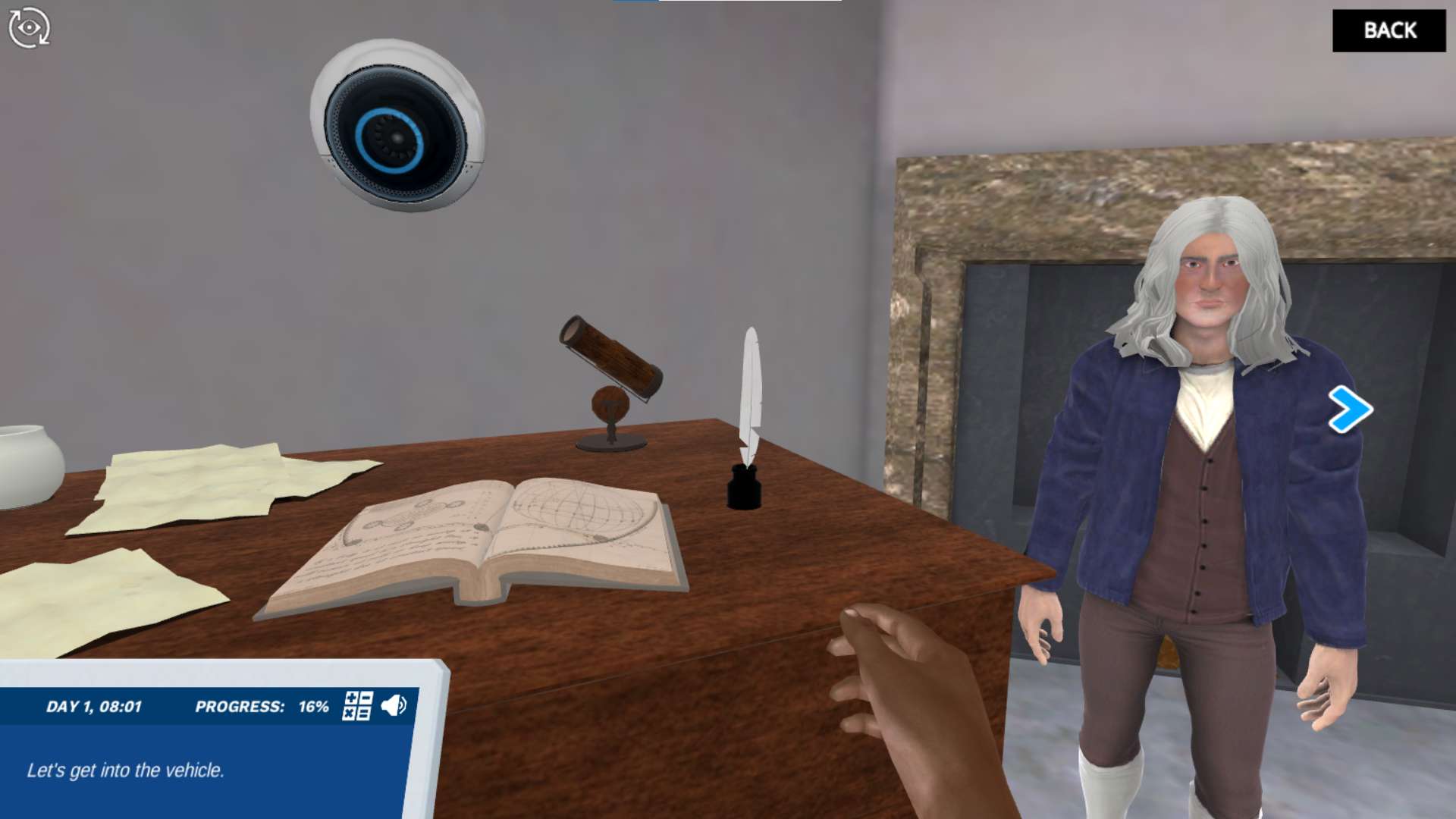Heading 1
Heading 2
Heading 3
Heading 4
Heading 5
Heading 6
Lorem ipsum dolor sit amet, consectetur adipiscing elit, sed do eiusmod tempor incididunt ut labore et dolore magna aliqua. Ut enim ad minim veniam, quis nostrud exercitation ullamco laboris nisi ut aliquip ex ea commodo consequat. Duis aute irure dolor in reprehenderit in voluptate velit esse cillum dolore eu fugiat nulla pariatur.
Block quote
Ordered list
- Item 1
- Item 2
- Item 3
Unordered list
- Item A
- Item B
- Item C
Bold text
Emphasis
Superscript
Subscript
About This Simulation
Travel through time and space to help Newton remember his second law. Use this physically realistic simulation to experiment with forces and masses, and observe their effects on acceleration and velocity.
Learning Objectives
- Use and rearrange equations to relate force, mass, and acceleration
- Calculate how changing the magnitude of balanced and unbalanced forces impacts the speed and acceleration of a body
- Interpret speed from a distance/time graph
About This Simulation
Lab Techniques
- Newton’s second law of motion
- Acceleration
- Velocity
- Mass
- Friction
- Vectors
- Vector sum
- Dynamics
- Motion
- Force
- Net force
Related Standards
- PS2.A-E1
- Physics 1 Unit 2.4
- 2.1 – Motion
Learn More About This Simulation
Newton's second law of motion describes the true power of forces. In this simulation, you will learn about Newton's Second Law: the relationship between the forces that act on a body, that body's mass, and its acceleration.
Apply forces and observe the resulting motion
In this sim, you will help Newton regain his memory of his second law of motion by applying forces on a body with adjustable mass to control its acceleration and produce different kinds of motion. Includes experimentation tasks and directed challenges that require the student to take the effects of added forces into account or produce a specific motion.
Relate force, mass, and acceleration
This simulation builds the student's understanding of the relationship between forces mass and acceleration with progressively incrementing complexity. By the end, the student is capable of fully understanding the impact of a force on a body's motion, and they can use and rearrange equations to relate force, mass, and acceleration.
To this end, we present the student with a variety of interactive physical scenarios (including scenarios with and without friction and with and without additional forces to balance) and plenty of opportunities to play with the physical parameters (including constant and instantaneous forces, a wide range of force magnitudes, exchangeable masses and friction surfaces.) well integrated into a motivating narrative.
Rediscover Newton’s second law of motion
In the end, you will have rediscovered Newton's second law of motion alongside him in all of its nuance. Will you be able to unlock the power of forces?
For Science Programs Providing a Learning Advantage
Boost STEM Pass Rates
Boost Learning with Fun
75% of students show high engagement and improved grades with Labster
Discover Simulations That Match Your Syllabus
Easily bolster your learning objectives with relevant, interactive content
Place Students in the Shoes of Real Scientists
Practice a lab procedure or visualize theory through narrative-driven scenarios


FAQs
Find answers to frequently asked questions.
Heading 1
Heading 2
Heading 3
Heading 4
Heading 5
Heading 6
Lorem ipsum dolor sit amet, consectetur adipiscing elit, sed do eiusmod tempor incididunt ut labore et dolore magna aliqua. Ut enim ad minim veniam, quis nostrud exercitation ullamco laboris nisi ut aliquip ex ea commodo consequat. Duis aute irure dolor in reprehenderit in voluptate velit esse cillum dolore eu fugiat nulla pariatur.
Block quote
Ordered list
- Item 1
- Item 2
- Item 3
Unordered list
- Item A
- Item B
- Item C
Bold text
Emphasis
Superscript
Subscript
A Labster virtual lab is an interactive, multimedia assignment that students access right from their computers. Many Labster virtual labs prepare students for success in college by introducing foundational knowledge using multimedia visualizations that make it easier to understand complex concepts. Other Labster virtual labs prepare learners for careers in STEM labs by giving them realistic practice on lab techniques and procedures.
Labster’s virtual lab simulations are created by scientists and designed to maximize engagement and interactivity. Unlike watching a video or reading a textbook, Labster virtual labs are interactive. To make progress, students must think critically and solve a real-world problem. We believe that learning by doing makes STEM stick.
Yes, Labster is compatible with all major LMS (Learning Management Systems) including Blackboard, Canvas, D2L, Moodle, and many others. Students can access Labster like any other assignment. If your institution does not choose an LMS integration, students will log into Labster’s Course Manager once they have an account created. Your institution will decide which is the best access method.
Labster is available for purchase by instructors, faculty, and administrators at education institutions. Purchasing our starter package, Labster Explorer, can be done using a credit card if you are located in the USA, Canada, or Mexico. If you are outside of North America or are choosing a higher plan, please speak with a Labster sales representative. Compare plans.
Labster supports a wide range of STEM courses at the high school, college, and university level across fields in biology, chemistry, physics, and health sciences. You can identify topics for your courses by searching our Content Catalog.















